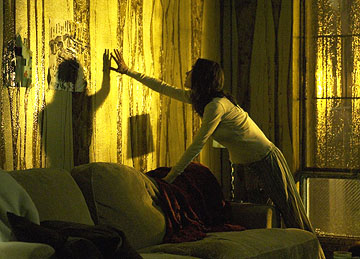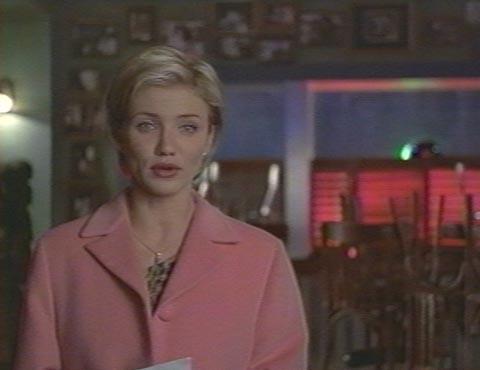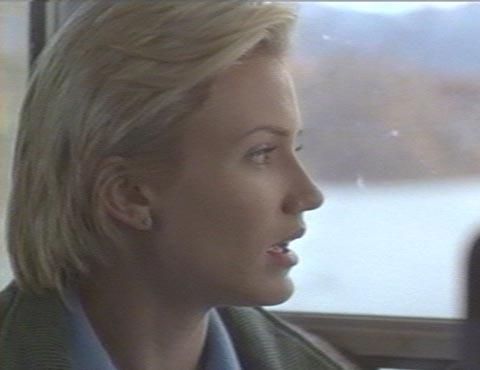Now that there’s an 11-month gap between adaptations of comics (the longest in five years?) until Iron Man comes out in May, followed in June by The Incredible Hulk and The Dark Knight, and by Hellboy 2 in July, I think it would be a good time to assess the past ten years of adaptations, which I consider the “third generation” of such films.
The Three Generations
The first generation of comic book adaptations is represented almost exclusively by Christopher Reeve’s Superman films, accompanied only by Wes Craven’s adaptation of another DC property, Swamp Thing (1982), their cash-in Supergirl (1984), and Marvel’s notorious Howard the Duck (1986). As far as I’m concerned the beginning of this era is open-ended, so the 1968 adaptations of Diabolik and Barbarella might as well be included, but its end was undoubtedly brought on by Superman IV: The Quest for Peace in 1987.
The second generation was sparked by the cultural event that was Tim Burton’s Batman in 1989. Along with its own sequels and the animated Mask of the Phantasm (1993), Batman inspired adaptations of period stories like Dick Tracy (1990) and The Rocketeer (1991), as well as the Ninja Turtles (1990, 1991, 1993) and Crow (1994, 1996) franchises. Besides a couple of horror adaptations — The Return of the Swamp Thing (1989) and Dr. Giggles (1992) seem hardly worth mentioning — other attempts to exploit the trend included The Mask, Richie Rich, The Shadow, Timecop (all 1994), Tank Girl, Judge Dredd (both 1995), Barb Wire and The Phantom (1996). In 1997 the adaptation of Men in Black proved a rare success — the first comics-based movie since Batman to make $250 million domestically — but this second generation of adaptations was drawn to an inauspicious close by the three strikes of Spawn, the Superman-spin-off Steel, and of course Batman & Robin.
The current renaissance was sparked by 1998’s Blade — the first R-rated adaptation of a superhero from either of the Big Two comic book publishers, not to mention the first theatrical release of a Marvel property since Howard the Duck — and its profitability was proven by 2000’s X-Men. But it wasn’t until Spider-Man broke practically every box-office record in 2002 that studios suddenly focused their attention on comic books in a furious search for the next blockbuster. Of course, as they greenlighted every available comic book property, none managed to duplicate Spider-Man‘s success except its own sequels.
But regardless of their financial successes or failures, Hollywood’s eagerness to exploit this newly rediscovered mine of source material gave the fans of that material an unprecedented opportunity to see a raft of their favorite characters finally depicted on film. Marvel Comics in particular seized the moment (perhaps recognizing that after the fad has passed Hollywood may never again be so well disposed to superheroes) and managed 16 productions in the last ten years, or 46% of American comic book adaptations in the period. By contrast, DC and its imprint Vertigo managed a total of six.
The List
I’m rating only theatrical releases, so the TV movie Nick Fury: Agent of SHIELD (1998), and direct-to-video releases The Crow: Salvation (2000), The Crow: Wicked Prayer (2004), and Man-Thing (2004) don’t count, but Blueberry and Immortel: Ad Vitam do even though their theatrical runs did not include the US.
And I’m rating only adaptations of comics, not original superhero movies, so Unbreakable (2000), The Dangerous Lives of Altar Boys (2002), The Incredibles (2004), Sky High (2005), and My Super Ex-Girlfriend (2006) do not qualify either.
I’m not an absolute completist, however. Of the 38 comic book adaptations in the last ten years, I haven’t seen Virus (1999), From Hell (2001), Catwoman (2004), Les Chevaliers du ciel (2005), or Son of the Mask (2005), so I’m just going to rate the movies I have seen.
It should go without saying that the primary consideration is a movie’s quality independent of its fidelity to the source material, which may or may not contribute to its success as a film. So now, in order from worst to best:
The Bad (when Hollywood jumped the comics-adapting shark)
33. Bulletproof Monk (2003)
32. Men in Black II (2002)
31. Elektra (2005)
The Ugly (entertaining enough but nonetheless disappointing)
30. Fantastic Four (2005)
29. Blade: Trinity (2004)
28. Blueberry (2004) a.k.a. Renegade
27. Ghost Rider (2007)
26. The Punisher (2004)
25. The League of Extraordinary Gentlemen (2003)
24. Spider-Man (2002)
23. X-Men (2000)
22. Spider-Man 3 (2007)
21. Hulk (2003)
EDIT: V for Vendetta (2005) not a great sign that I totally forgot about this one
The Good (respectable adaptations)
20. TMNT (2007)
19. Fantastic Four: Rise of the Silver Surfer (2007)
18. Daredevil (2003)
17. Blade II (2002)
16. Sin City (2005)
15. American Splendor (2003)
14. Immortel: Ad Vitam (2004)
13. Hellboy (2004)
12. Blade (1998)
11. X-Men: The Last Stand (2006)
The Best (good movies in their own right)
10. 300 (2007)
9. Superman Returns (2006)
8. Mystery Men (1999)
7. Constantine (2005)
6. Spider-Man 2 (2004)
5. X2 (2003)
4. Road to Perdition (2002)
3. A History of Violence (2005)
2. Ghost World (2000)
1. Batman Begins (2005)




